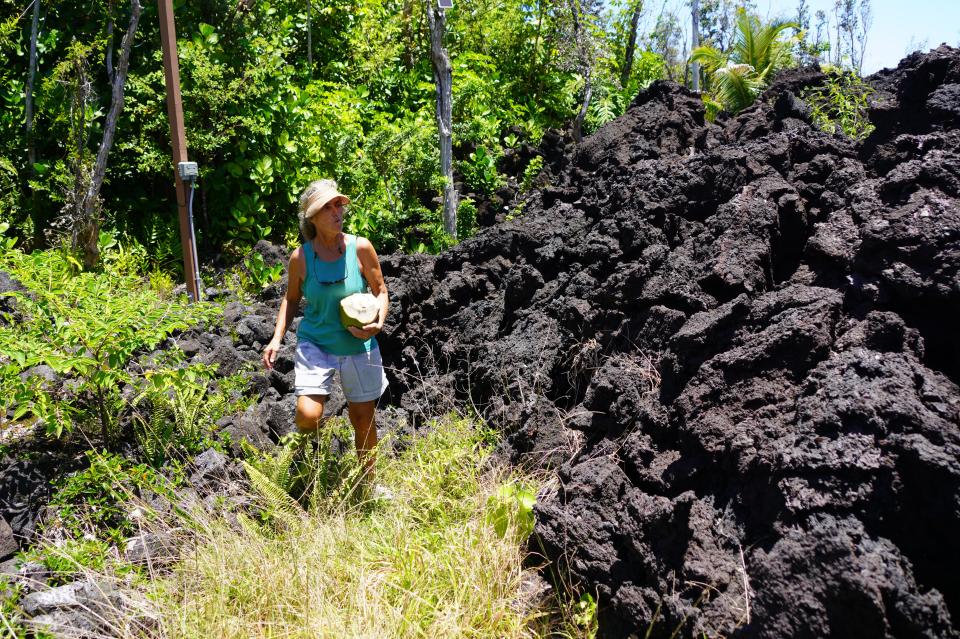Kilauea volcano in Hawaii continues to erupt. Here's how to watch the lava fountains
One of the world's most active volcanoes, Kilauea on the Big Island of Hawaii, continued to erupt Thursday, sending up fountains of lava from its crater floor.
The U.S. Geological Survey said the eruption began at 4:44 a.m. Wednesday local time with the glow of lava at the summit, and moved its volcano alert level from "warning" to "watch," and the aviation warning in the area to "red."
Viewers can see the glowing red lava ooze out of Kilauea for themselves via a livestream on YouTube. On Thursday morning, the stream showed lava bubbling to the surface of the crater and oozing down the volcano.
The eruption is confined to a closed area of Hawai'i Volcanoes National Park, the service said.
The Hawaii Emergency Management Agency said on Twitter that populated areas were not under threat. Lava flows from other parts of the volcano have destroyed populated areas in years past.
But officials warned Wednesday of airborne health hazards to people, agriculture and livestock as the eruption can generate gases that react as smog, and drop ash and even shards of volcanic glass that worsen breathing problems and irritate eyes and skin.
"High levels of volcanic gas are the primary hazard of concern, as this hazard can have far-reaching effects downwind," the USGS said.
How can I watch the Kilauea eruption?
USGS broadcasts a livestream video of the crater on its YouTube channel, where viewers can see glowing molten lava bubbling and oozing out of the ground. The lava is especially visible in the dark hours before dawn. Hawaii time is several hours behind the mainland U.S.
What island is Kilauea volcano on?
The volcano that began erupting Wednesday is located on Hawaii's Big Island, otherwise known as the Island of Hawaii. Five volcanoes make up the island. Kilauea's bigger neighbor, Mauna Loa, sent molten lava sliding toward a major highway as recently as last year.
How often does the Kilauea volcano in Hawaii erupt?
The Kilauea volcano has erupted as recently as March. It also erupted from September 2021 through mid-December.
The eruption of Kilauea volcano is happening in a section of Hawaii Volcanoes National Park that has been completely closed to the public since 2007, according to the USGS.
Is Kilauea dangerous?
Past eruptions have led to lava flows from different parts of the volcano that caused extensive damage.
A 2018 eruption flooded an area 10 times the size of New York's Central Park, destroying more than 700 structures, including 200 homes, and displacing about 3,000 people. The damage estimate totaled nearly $300 million for residents, with another $236 million in damage to roads, waterlines and public parks.

Officials note that the eruption is currently contained within the Halemaumau Crater, meaning it poses no risk at this time to nearby homes or roads.
The crater at the site of the volcano has unstable walls, the earth in the area of the volcano cracks open and there are earthquakes that cause rocks and other materials to fall apart.
"This underscores the extremely hazardous nature of Kīlauea caldera rim," the USGS website said.
This article originally appeared on USA TODAY: Kilauea volcano on Hawaii's Big Island is erupting. What to know.

